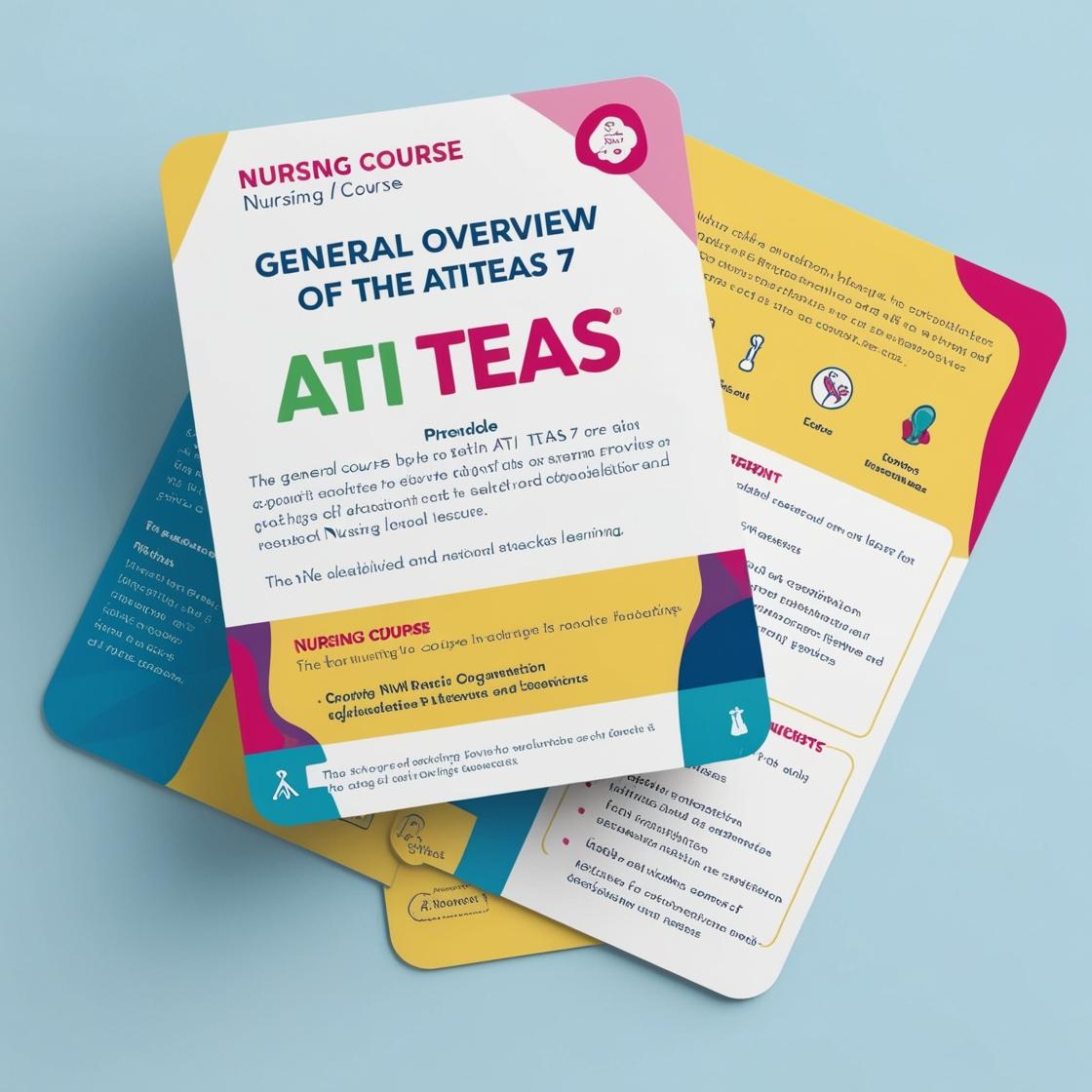ATI TEAS 7
TEAS Test 7 science quizlet
1. How can the periodic table be used to predict the charge of an ion formed by an element?
- A. Look for elements with similar atomic weights.
- B. Identify the group number, which corresponds to the typical ionic charge.
- C. Calculate the difference between protons and electrons.
- D. Analyze the element's position within the period.
Correct answer: B
Rationale: The group number of an element on the periodic table corresponds to the number of valence electrons it has. Elements in the same group tend to form ions with the same charge. For example, elements in Group 1 typically form ions with a +1 charge, while elements in Group 17 typically form ions with a -1 charge. Therefore, by identifying the group number of an element, one can predict the typical ionic charge it will form. Choices A, C, and D are incorrect because predicting the charge of an ion is mainly based on the element's position in the periodic table, particularly the group number, which indicates the number of valence electrons and the typical ionic charge it may form.
2. Define 'friction' in terms of opposing motion.
- A. A force that increases motion
- B. A force that accelerates motion
- C. A force that opposes motion
- D. A force that creates motion
Correct answer: C
Rationale: Friction is a force that opposes motion. When two surfaces are in contact, friction acts in the opposite direction to the motion or the potential motion between the two surfaces. It resists the relative motion of solid surfaces, fluid layers, and material elements sliding against each other. Friction hinders or prevents motion rather than promoting it. Choices A, B, and D are incorrect as they suggest that friction increases, accelerates, or creates motion, which is inaccurate. The correct definition of friction is that it opposes motion, making choice C the most appropriate option.
3. Which of the following glands is NOT directly controlled by the pituitary gland?
- A. Thyroid gland
- B. Adrenal glands
- C. Pancreas (Islets of Langerhans)
- D. Parathyroid glands
Correct answer: C
Rationale: The pituitary gland, known as the master gland, regulates various endocrine glands by releasing specific hormones. The thyroid gland, adrenal glands, and parathyroid glands are directly controlled by the pituitary gland through hormones like thyroid-stimulating hormone (TSH), adrenocorticotropic hormone (ACTH), and parathyroid hormone (PTH) respectively. However, the pancreas, particularly the Islets of Langerhans, is not directly influenced by the pituitary gland. The pancreas is mainly governed by blood glucose levels and hormones such as insulin and glucagon, which play a crucial role in regulating blood sugar levels and metabolism. Therefore, the correct answer is C. Choice A, the thyroid gland, is controlled by the pituitary gland through TSH. Choice B, the adrenal glands, are regulated by the pituitary gland via ACTH. Choice D, the parathyroid glands, are under the direct control of the pituitary gland through PTH.
4. Which term in physics describes the resistance of an object to changes in its motion?
- A. Inertia
- B. Momentum
- C. Gravity
- D. Kinetic energy
Correct answer: A
Rationale: Inertia is the term that describes the resistance of an object to changes in its motion. This property is explained by Newton's First Law of Motion, which states that objects tend to maintain their state of motion unless acted upon by an external force. Inertia is closely related to mass, where objects with more mass exhibit more resistance to changes in motion. Momentum (B) is the product of an object's mass and velocity, gravity (C) is the force of attraction between objects, and kinetic energy (D) is the energy associated with an object's motion. Therefore, the correct answer is A because inertia specifically addresses the resistance of an object to changes in its motion.
5. In ecology, what defines a closed system?
- A. Exchanges energy but not matter
- B. Exchanges both energy and matter
- C. Exchanges neither energy nor matter
- D. Recycles nutrients efficiently
Correct answer: A
Rationale: In ecology, a closed system is one that does not exchange matter with its surroundings but can exchange energy. This means that while energy can enter or leave the system, the amount of matter within the system remains constant. Option A correctly defines a closed system in ecology. Choices B and C are incorrect as a closed system does not exchange matter or energy. Option D is unrelated to the concept of a closed system in ecology.
Similar Questions

Access More Features
ATI TEAS Premium Plus
$149.99/ 90 days
- Actual ATI TEAS 7 Questions
- 3,000 questions with answers
- 90 days access
ATI TEAS Basic
$99/ 30 days
- 3,000 Questions with answers
- 30 days access
